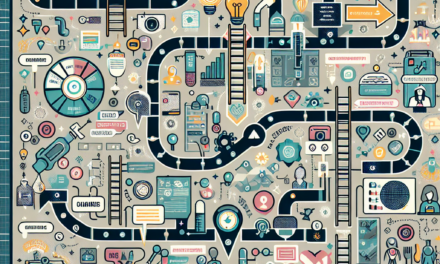ViVE 2025: Enhancing Clinical Efficiency in the Face of Workforce Challenges
The healthcare industry is undergoing a significant transformation, driven by technological advancements, evolving patient needs, and pressing workforce challenges. As we look toward ViVE 2025, a pivotal event that brings together healthcare leaders, innovators, and technology experts, the focus is on enhancing clinical efficiency amidst these challenges. This article delves into the key aspects of ViVE 2025, exploring how healthcare organizations can leverage technology and innovative practices to improve clinical efficiency while addressing workforce shortages and other pressing issues.
Understanding the Workforce Challenges in Healthcare
The healthcare sector is currently grappling with a myriad of workforce challenges that threaten its ability to deliver high-quality care. These challenges are multifaceted and include staffing shortages, burnout, and the need for continuous training and development.
Staffing Shortages
One of the most pressing issues facing healthcare today is staffing shortages. According to the Association of American Medical Colleges (AAMC), the U.S. could face a shortage of up to 124,000 physicians by 2034. This shortage is exacerbated by an aging population that requires more medical attention and a growing number of healthcare professionals retiring from the workforce.
- Impact on Patient Care: Staffing shortages can lead to longer wait times, reduced patient satisfaction, and ultimately, poorer health outcomes.
- Increased Workload: Remaining staff often face increased workloads, leading to burnout and decreased job satisfaction.
- Retention Issues: High turnover rates can further exacerbate staffing shortages, creating a vicious cycle that is difficult to break.
Burnout and Mental Health
Healthcare professionals are experiencing unprecedented levels of burnout, particularly in the wake of the COVID-19 pandemic. A survey conducted by the American Medical Association found that nearly 50% of physicians reported feeling burned out. This mental health crisis not only affects the well-being of healthcare workers but also impacts patient care.
- Symptoms of Burnout: Common symptoms include emotional exhaustion, depersonalization, and a reduced sense of personal accomplishment.
- Consequences: Burnout can lead to decreased productivity, increased medical errors, and higher rates of turnover.
- Addressing Burnout: Organizations must prioritize mental health support and create a culture that values work-life balance.
Need for Continuous Training and Development
As technology continues to evolve, healthcare professionals must engage in continuous training and development to stay current with best practices and new technologies. However, many organizations struggle to provide adequate training due to time constraints and budget limitations.
- Importance of Training: Ongoing education is essential for improving clinical skills and ensuring patient safety.
- Barriers to Training: Common barriers include lack of time, insufficient funding, and limited access to training resources.
- Innovative Solutions: Organizations can leverage online training platforms and simulation-based learning to enhance training opportunities.
Leveraging Technology to Enhance Clinical Efficiency
In response to workforce challenges, healthcare organizations are increasingly turning to technology to enhance clinical efficiency. From telehealth to artificial intelligence (AI), innovative solutions are transforming the way care is delivered.
Telehealth: Expanding Access to Care
Telehealth has emerged as a vital tool for expanding access to care, particularly in underserved areas. The COVID-19 pandemic accelerated the adoption of telehealth services, with a report from McKinsey & Company indicating that telehealth utilization stabilized at 38 times higher than pre-pandemic levels.
- Benefits of Telehealth: Telehealth can reduce travel time for patients, lower healthcare costs, and improve access to specialists.
- Challenges: Despite its benefits, telehealth faces challenges such as technology barriers, reimbursement issues, and concerns about the quality of care.
- Future of Telehealth: As technology continues to advance, telehealth is expected to become an integral part of the healthcare delivery model.
Artificial Intelligence in Clinical Decision-Making
AI is revolutionizing clinical decision-making by providing healthcare professionals with data-driven insights. AI algorithms can analyze vast amounts of data to identify patterns and predict patient outcomes, ultimately enhancing clinical efficiency.
- Applications of AI: AI can be used for predictive analytics, diagnostic support, and personalized treatment plans.
- Case Study: A study published in JAMA Network Open found that an AI algorithm could accurately predict patient deterioration, allowing for timely interventions.
- Ethical Considerations: As AI becomes more prevalent, ethical considerations regarding data privacy and algorithm bias must be addressed.
Electronic Health Records (EHR) Optimization
While EHRs have been instrumental in digitizing patient records, many healthcare organizations struggle with EHR usability and efficiency. Optimizing EHR systems can significantly enhance clinical workflows and reduce administrative burdens.
- Streamlining Workflows: Customizing EHR templates and automating routine tasks can save time and improve efficiency.
- Interoperability: Ensuring that EHR systems can communicate with one another is crucial for providing coordinated care.
- Training and Support: Providing adequate training and ongoing support for EHR users can enhance adoption and usability.
Innovative Workforce Solutions
To address workforce challenges, healthcare organizations must explore innovative solutions that enhance recruitment, retention, and employee satisfaction.
Flexible Work Arrangements
Offering flexible work arrangements can significantly improve employee satisfaction and retention. Many healthcare professionals seek work-life balance, and organizations that provide options such as remote work or flexible scheduling are more likely to attract and retain talent.
- Benefits of Flexibility: Flexible work arrangements can reduce burnout, increase job satisfaction, and improve overall employee well-being.
- Implementation Strategies: Organizations can implement flexible scheduling, telecommuting options, and job-sharing arrangements to accommodate employee needs.
- Case Study: A hospital that implemented flexible scheduling reported a 20% decrease in turnover rates within a year.
Investing in Employee Well-Being
Prioritizing employee well-being is essential for addressing burnout and improving job satisfaction. Organizations can implement wellness programs that focus on physical, mental, and emotional health.
- Components of Wellness Programs: Effective wellness programs may include mental health support, fitness initiatives, and stress management resources.
- Impact on Retention: Organizations that invest in employee well-being often see improved retention rates and enhanced employee morale.
- Success Stories: A healthcare system that introduced a comprehensive wellness program reported a 30% reduction in burnout among staff.
Utilizing Data Analytics for Workforce Management
Data analytics can play a crucial role in workforce management by providing insights into staffing needs, employee performance, and turnover trends. By leveraging data, organizations can make informed decisions that enhance clinical efficiency.
- Predictive Analytics: Predictive analytics can help organizations anticipate staffing shortages and identify high-risk employees who may be at risk of burnout.
- Performance Metrics: Tracking performance metrics can provide insights into employee productivity and areas for improvement.
- Case Study: A healthcare organization that implemented data analytics for workforce management reported a 15% increase in staff productivity.
Case Studies: Successful Implementation of Efficiency Strategies
Examining real-world examples of healthcare organizations that have successfully implemented strategies to enhance clinical efficiency can provide valuable insights for others facing similar challenges.
Case Study 1: Telehealth Implementation at a Rural Hospital
A rural hospital in the Midwest faced significant challenges in providing timely care due to staffing shortages and geographic barriers. To address these issues, the hospital implemented a telehealth program that allowed patients to consult with specialists remotely.
- Results: The telehealth program led to a 40% increase in patient visits and improved access to specialty care for rural patients.
- Patient Satisfaction: Patient satisfaction scores increased significantly, with many patients reporting that telehealth made it easier to access care.
- Lessons Learned: The hospital emphasized the importance of training staff on telehealth technology and ensuring robust technical support for patients.
Case Study 2: AI-Driven Clinical Decision Support at a Large Health System
A large health system implemented an AI-driven clinical decision support system to enhance diagnostic accuracy and improve patient outcomes. The system analyzed patient data and provided real-time recommendations to clinicians.
- Impact on Outcomes: The implementation of the AI system resulted in a 25% reduction in diagnostic errors and improved patient outcomes.
- Provider Feedback: Clinicians reported increased confidence in their decision-making, leading to higher job satisfaction.
- Challenges: The health system faced initial resistance from staff, highlighting the need for comprehensive training and change management strategies.
Case Study 3: EHR Optimization at a Community Health Center
A community health center struggled with EHR usability, leading to inefficiencies in clinical workflows. To address this, the center undertook an EHR optimization project that involved customizing templates and streamlining data entry processes.
- Results: The optimization project led to a 30% reduction in time spent on documentation, allowing clinicians to focus more on patient care.
- Staff Engagement: Involving staff in the optimization process increased buy-in and improved overall satisfaction with the EHR system.
- Ongoing Support: The health center established a dedicated support team to assist staff with EHR-related issues, further enhancing usability.
Conclusion: The Path Forward for Healthcare Efficiency
As we approach ViVE 2025, the healthcare industry stands at a crossroads. The challenges posed by workforce shortages, burnout, and the need for continuous training are significant, but they also present opportunities for innovation and improvement. By leveraging technology, implementing innovative workforce solutions, and learning from successful case studies, healthcare organizations can enhance clinical efficiency and ultimately improve patient care.
The key takeaways from this exploration of ViVE 2025 include:
- Understanding Workforce Challenges: Recognizing the multifaceted nature of workforce challenges is essential for developing effective solutions.
- Leveraging Technology: Embracing telehealth, AI, and EHR optimization can significantly enhance clinical efficiency.
- Innovative Workforce Solutions: Flexible work arrangements and investments in employee well-being are crucial for attracting and retaining talent.
- Learning from Case Studies: Real-world examples provide valuable insights into successful strategies for enhancing efficiency.
- Commitment to Continuous Improvement: The healthcare industry must remain committed to continuous improvement and innovation to meet the evolving needs of patients and providers.
As we look ahead to ViVE 2025, the focus on enhancing clinical efficiency in the face of workforce challenges will be paramount. By embracing change and fostering a culture of innovation, healthcare organizations can navigate these challenges and emerge stronger than ever.





